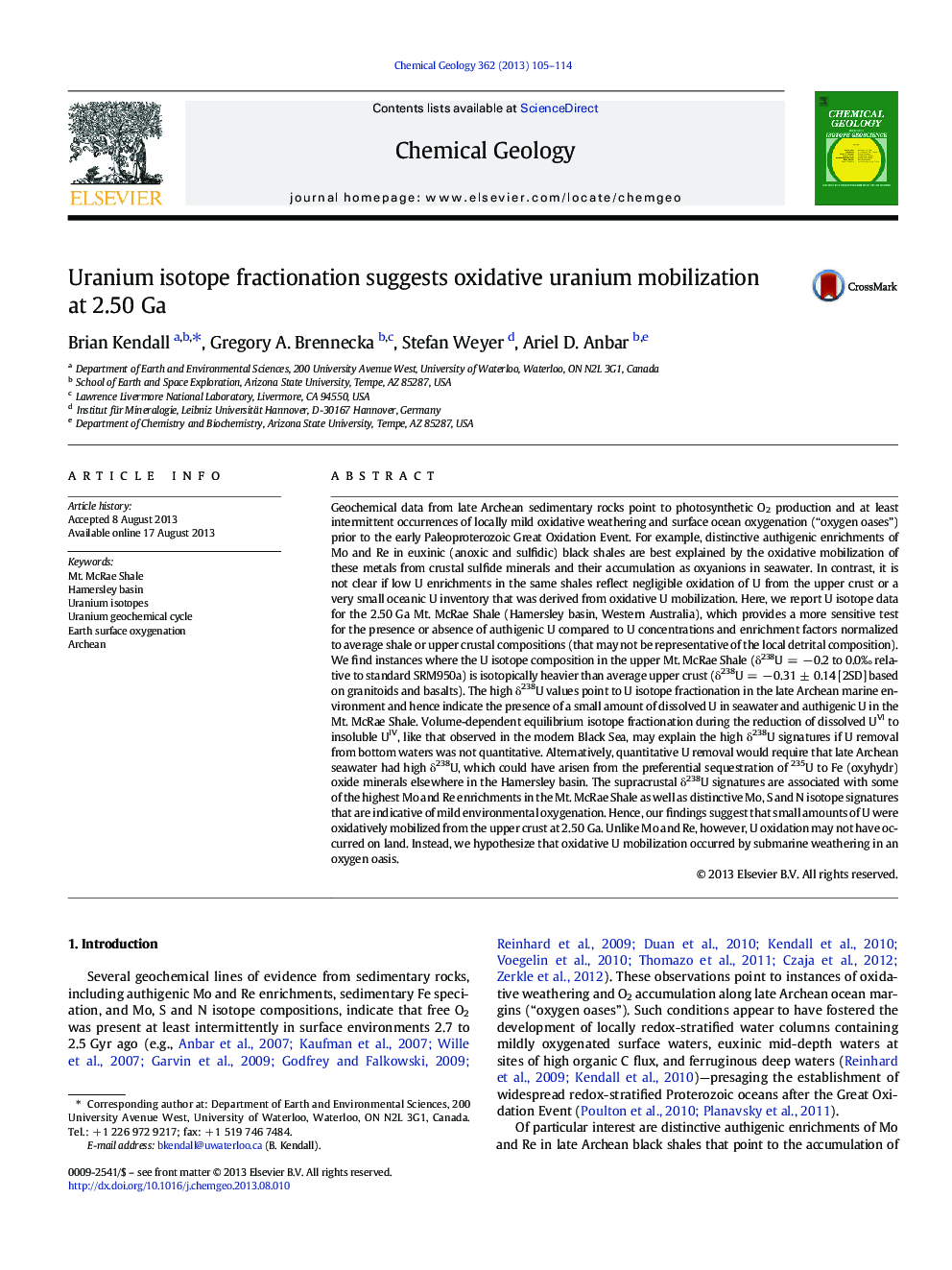| Article ID | Journal | Published Year | Pages | File Type |
|---|---|---|---|---|
| 6436757 | Chemical Geology | 2013 | 10 Pages |
â¢We find instances of heavy U isotope compositions in the 2.50 Ga Mt. McRae Shale.â¢The supracrustal U isotope data points to marine U isotope fractionation.â¢Small amounts of dissolved U were present in late Archean seawater.â¢High Re and Mo abundances are associated with the heavy U isotope compositions.â¢U oxidation may have occurred in oxygenated shallow waters rather than on land.
Geochemical data from late Archean sedimentary rocks point to photosynthetic O2 production and at least intermittent occurrences of locally mild oxidative weathering and surface ocean oxygenation (“oxygen oases”) prior to the early Paleoproterozoic Great Oxidation Event. For example, distinctive authigenic enrichments of Mo and Re in euxinic (anoxic and sulfidic) black shales are best explained by the oxidative mobilization of these metals from crustal sulfide minerals and their accumulation as oxyanions in seawater. In contrast, it is not clear if low U enrichments in the same shales reflect negligible oxidation of U from the upper crust or a very small oceanic U inventory that was derived from oxidative U mobilization. Here, we report U isotope data for the 2.50 Ga Mt. McRae Shale (Hamersley basin, Western Australia), which provides a more sensitive test for the presence or absence of authigenic U compared to U concentrations and enrichment factors normalized to average shale or upper crustal compositions (that may not be representative of the local detrital composition). We find instances where the U isotope composition in the upper Mt. McRae Shale (δ238U = â 0.2 to 0.0â° relative to standard SRM950a) is isotopically heavier than average upper crust (δ238U = â 0.31 ± 0.14 [2SD] based on granitoids and basalts). The high δ238U values point to U isotope fractionation in the late Archean marine environment and hence indicate the presence of a small amount of dissolved U in seawater and authigenic U in the Mt. McRae Shale. Volume-dependent equilibrium isotope fractionation during the reduction of dissolved UVI to insoluble UIV, like that observed in the modern Black Sea, may explain the high δ238U signatures if U removal from bottom waters was not quantitative. Alternatively, quantitative U removal would require that late Archean seawater had high δ238U, which could have arisen from the preferential sequestration of 235U to Fe (oxyhydr)oxide minerals elsewhere in the Hamersley basin. The supracrustal δ238U signatures are associated with some of the highest Mo and Re enrichments in the Mt. McRae Shale as well as distinctive Mo, S and N isotope signatures that are indicative of mild environmental oxygenation. Hence, our findings suggest that small amounts of U were oxidatively mobilized from the upper crust at 2.50 Ga. Unlike Mo and Re, however, U oxidation may not have occurred on land. Instead, we hypothesize that oxidative U mobilization occurred by submarine weathering in an oxygen oasis.
